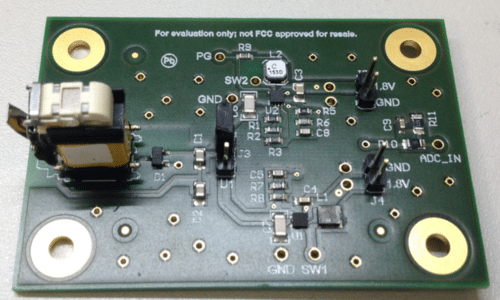The switches convert mechanical action into electricity, eliminating batteries and wiring to enhance efficiency and reliability in industrial settings.

Energy-harvesting wireless switches, such as the TIDA-00690 from Texas Instruments, play a crucial role in modern industrial settings by eliminating the need for batteries and wiring, thus reducing maintenance costs and enhancing reliability. These switches function as linear dynamos, transforming mechanical action into electrical energy. This not only offers a sustainable solution that lowers operational costs and increases flexibility, especially in environments where wiring is impractical or hazardous, but also supports seamless integration into existing systems for upgrades and retrofits.
The harvested electrical energy from these switches is efficiently utilized for various applications, including wireless position control of valves, emergency switches, and machine start-stop controllers. Their cable-free design improves flexibility and system uptime, particularly beneficial in settings affected by mechanical vibrations or chemical aggressiveness.
This technology finds broad applications across factory automation, process control, field actuators, and field transmitters, significantly enhancing operational efficiency and reliability. The design is particularly designed for scenarios requiring digital inputs such as on-off signals for machines, presence and position sensing, counting, and alarm signaling.
The reference design also provides a sophisticated power management solution tailored for these energy-harvesting switches. It includes a buck converter that regulates the rectified and doubled signal from the switch, with a voltage doubler at the input charging capacitors to produce twice the voltage at its output as at the input. This design feature helps to make these switches suitable for explosion-proof applications by eliminating the need for costly safety measures like intrinsically safe barriers.
Furthermore, this reference design supports BLE beacon transmission across three channels, handling 8 bytes per channel, and operates effectively within a broad temperature range of –40°C to 85°C. It is compatible with the SimpleLink CC2650 Wireless MCU LaunchPad Kit, facilitating wireless data transmission powered by the TPS62122 or TPS62125 on the board. These features underscore the design’s capability to harvest over 0.16 mJ of energy in just 15 ms, enhancing its efficiency and application scope in dynamic industrial landscapes.
Energy harvesting is the process of deriving energy from external sources such as solar power, thermal energy, wind, and kinetic energy, which is then captured and stored for use by wireless autonomous devices. These devices extract minimal amounts of ambient energy—from sources like sunlight, wind, heat, and electromagnetic fields—and must efficiently manage this to power wireless applications. Traditionally, many wireless devices are battery-powered, requiring periodic maintenance and incurring extra costs due to limited battery life. However, the use of energy harvesters can significantly reduce or even eliminate the need for batteries. The TIDA-00690 is an example of this innovative approach, operating without any batteries or external power supplies by harnessing energy solely from the energy-harvesting switch to wirelessly transmit necessary information.
TI has tested this reference design. It comes with a Bill of Material (BOM), schematics, etc. You can find additional data about the reference design on the company’s website. To read more about this reference design, click here.






